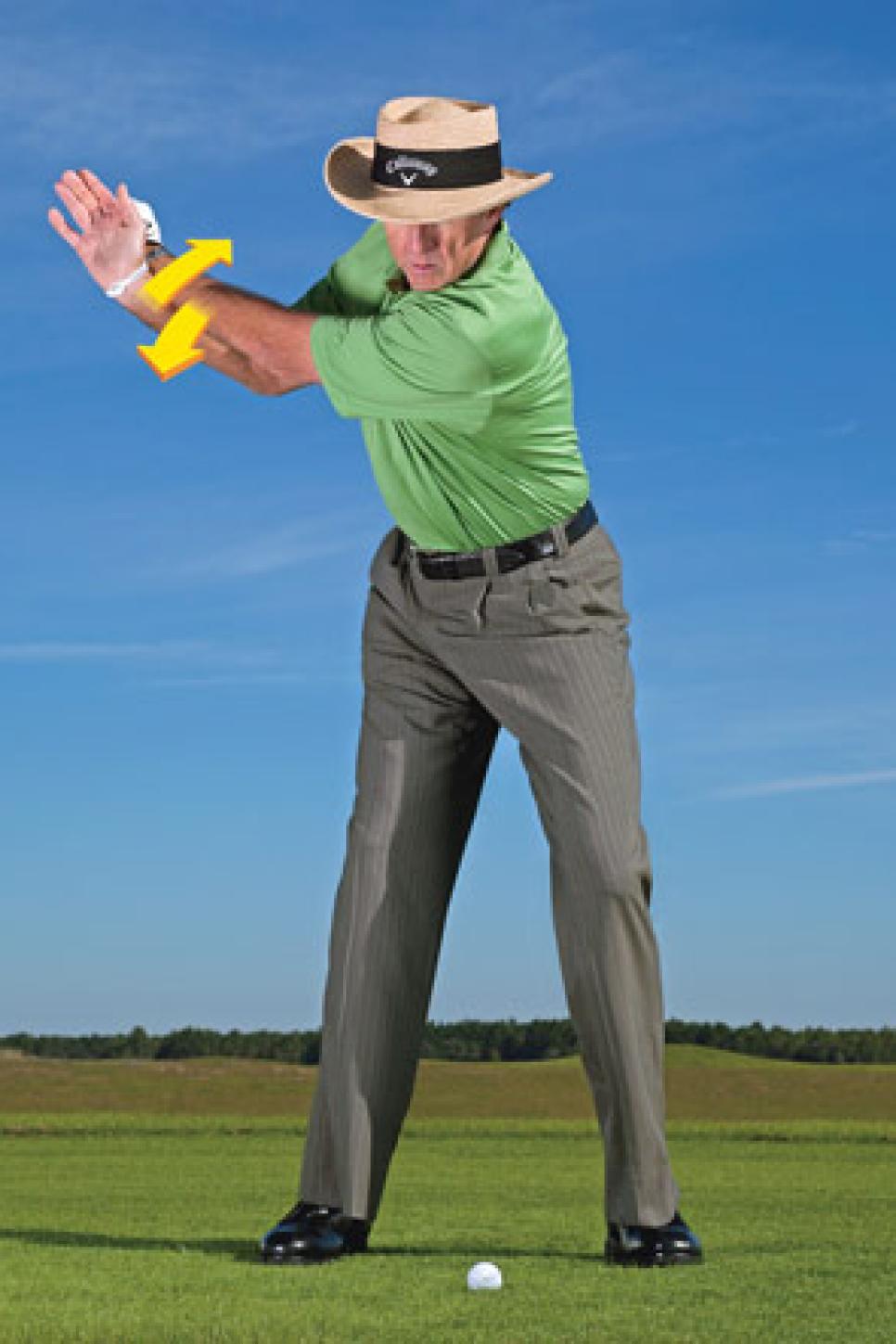Driving
Learn To Coil For Power

Winding your upper torso during the backswing is essential for power and solid ball-striking. You don't need to make a huge turn off the ball or swing back until the shaft is parallel to the ground. The feel to strive for is that your upper body is loading up energy as you take the club back—just like medieval armies cranking a catapult into firing position. Your goal should be to build and store this energy on the backswing so you can unleash it toward the target as you start down.
Here's a good exercise to feel this loading-up process. Stand in your address position without a club. Let your arms hang, then cross your left wrist over your right so the backs of your hands are touching. Now, keeping your lower body stable, rotate your right side away from the target while trying to resist with your left arm (see photo). These opposing forces will help you feel a coiling action in your core and back muscles.
A second benefit to this drill is that it teaches you to keep your left arm extended. Many amateurs let the lead arm collapse during the backswing, and that makes it tough to hit the ball solidly. This combination of left-arm extension and upper-body coil will put you in position to hit the ball flush and with power.
SWING THOUGHT: GET YOUR HIPS INTO IT
Once you learn to make a fully loaded backswing, you're ready to tackle the first move down. Do the winding drill above and hold it for a few seconds. Really feel your back muscles stretching. Now, while holding this stretched position, start rotating your lower body toward the target. You'll feel your weight move onto your left side. In a real swing, your hips should be turning forward before you release that top-of-backswing position. Get a feel for this, then hit some shots trying to re-create it.
David Leadbetter, is a Golf Digest Teaching Professional and operates 26 golf academies worldwide.